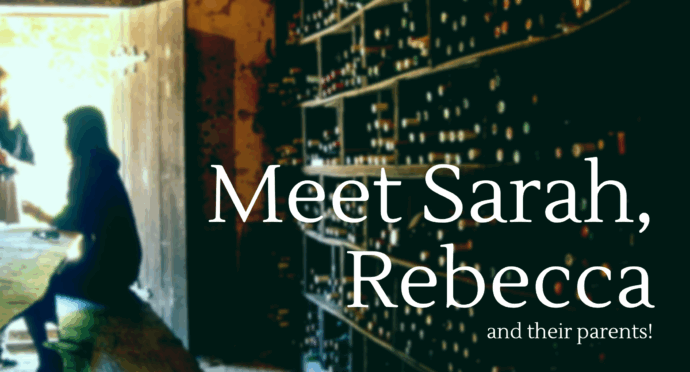Here’s the story of two young Australians (made up, for illustrative purposes)… Sarah and Rebecca.
They finish uni together and start their careers in exactly the same role, earning the same income.
But the presence (or absence) of parental wealth quietly but dramatically alters their financial trajectory.
The tale of two grads
After uni Sarah and Rebecca both land a graduate position at a major consulting firm in Melbourne’s CBD, each with a starting salary of $75,000 per year.
On paper they are identical. But there’s one key difference… Sarah is able to live at home rent-free with her parents who conveniently have a spacious family home near the city.
Rebecca, meanwhile, is from regional Victoria. Her parents are supportive but don’t have the financial means to house her in the city.
So to take the job, Rebecca needs to move to Richmond and rent a one-bedroom apartment close to the office. She pays $250 per week in rent, a conservative estimate for inner city living.
This one practical decision – where they live – sets in motion a growing divide.
The long-term cost of renting
Now $250 per week in rent might not seem significant. But here is the maths…
- $250 per week x 52 weeks = $13,000 per year
- Over 10 years, that’s $130,000 in rent. Gone.
Meanwhile, Sarah pays nothing in rent. That same $13,000 per year is instead going into her savings account. By the end of the decade, she’s $130,000 ahead.
But living independently means Rebecca also has to pay for her own utilities, groceries, furniture and appliance purchases, insurances and cleaning.
Conservatively, these costs average a further $12,000 per year. Another $120,000 over the 10 year period. Whereas Sarah continues living at home where many of these expenses are absorbed by her parents.
So by her early 30s, Sarah is $250,000 ahead of Rebecca ($130k from not having to pay rent, and a further $120k from reduced living expenses).
This is before we even consider the biggest wealth transfer of all…
The ‘gift’
Around age 32, Sarah and Rebecca each decide it’s time to buy their first home.
Rebecca has worked hard. Despite spending $25,000 a year more on rent and living expenses, she has still managed to save $150,000 over 10 years, mostly through diligent budgeting and a modest annual bonus.
But Sarah’s savings look very different. She was $250,000 ahead to begin with, and this same $150,000 result in $400,000 savings which can go towards her first home purchase.
Then comes the defining moment: Sarah’s parents gift her a further $500,000 towards her first home!
This allows Sarah to enter the market with a $900,000 deposit!
It’s a huge head start, but we see this all the time at Long Property…
It’s not about creating division. It’s about recognising reality.
Two different properties, two very different outcomes
With a $900,000 deposit and strong borrowing power, Sarah can now afford to purchase a property worth around $2.0 million. She can target blue-chip suburbs like Malvern or Hawthorn, buying a quality home with strong capital growth prospects.
Rebecca, with the smaller $150,000 deposit, may be limited to homes around $750,000–$900,000, depending on the bank’s lending criteria. She might end up buying a townhouse or unit in a middle-ring suburb, where growth may be slower.
This difference doesn’t just affect the size or quality of the property—it affects much more:
- Capital growth potential
- School zones and resale potential
- Borrowing power for future purchases
- Rental income (if used as an investment)
The wealth snowball… equity, leverage and compounding
Here’s where the gap can wider even further…
Assume both properties grow at an average of 5% per year, a fairly conservative long-term growth rate in many parts of Melbourne.
- Sarah’s $2.0 million home grows by $100,000 per year. After 10 years, it’s worth over $3.25 million, and she’s built more than $1.25 million in equity.
- Rebecca’s $850,000 home grows by $42,500 per year. After 10 years, it’s worth about $1.38 million, with $530,000 in new equity.
That’s a $720,000 difference in new equity, and it keeps growing over time.
Sarah can now use the equity in her home to buy a second investment property, amplifying her portfolio and potentially accelerating her wealth position further again.
And on it goes…
Reflections
Sarah and Rebecca both worked equally hard. They got the same degree, they earned the same income.
But Sarah had the benefit of a wealthier family. She had a $750,000 larger deposit enabling her to purchase a superior property. Then the power of leverage and compounding capital growth moved things further in her favour from there.
Again the reality in Australia is that the property landscape is increasingly being shaped by family background, inherited wealth, and early access to capital.
This isn’t to say home ownership for any Australian is out of reach. Hard working Australians can still save up a deposit, obtain finance, and buy a property.
However ‘expectations’ may need to be adjusted, and it is definitely not a level playing field…
—
The Long Property Blog provides general information only and has been prepared without taking into account your objectives, financial situation or needs. We recommend that you consider whether it is appropriate for your circumstances and your full financial situation will need to be reviewed prior to acceptance of any offer or product. Nothing in this article or the Long Property Blog constitutes legal, tax or financial advice and you should always seek professional advice in relation to your individual circumstances.




